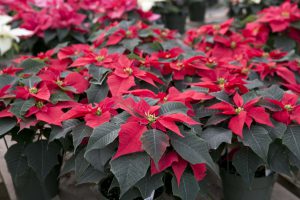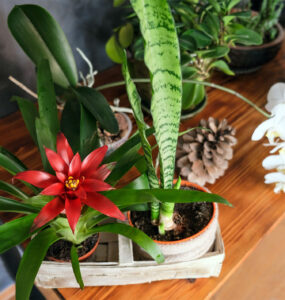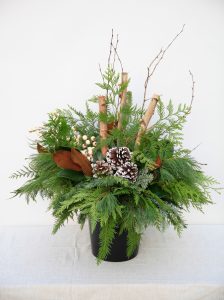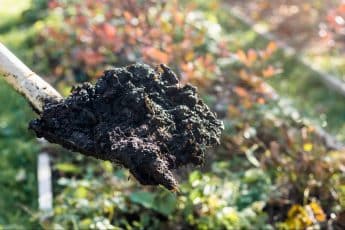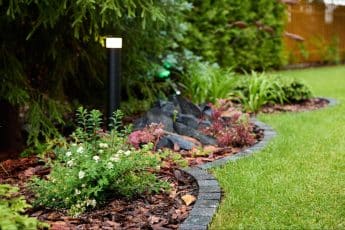
Winterizing Made Easy
by Rob Sproule
Months ago I read something that stuck in my brain like old gum. While young people (under 40 in this case) love gardening more than standard “hell-in-a-handbasket” hype would lead you to believe, they often don’t want to be called “gardeners.”
Mulling this over, I realized that the “gardener” label, which many of us wear so naturally we don’t question its definition, carries stereotypical baggage of long, labour intensive days under a relentless sun, plough in the palm and sweat in the eye. This is how many young people see gardening, and the stereotype lives on every time someone tells them how hard different parts of gardening are.
This is the ultimate gardening myth, one that I aim to smash like a dictator’s statue after a revolution. Gardening is an exercise in free will; it is what you make it. Like anything in life, you can make it excessively difficult or efficiently easy. I preach the latter and delight in telling people, young or otherwise, that gardening does not equal a sore back and blistered hands.
Inevitability:
Appropriately, I had to scrape my windshield for the first time this morning. October is the month where Game of Thrones fans everywhere can say over and over: winter is coming.
Winterizing the yard is a prime spreader of the gardening-is-labourious myth. As beans brown, leaves flitter and lawn shudders into dormancy, we look out our windows dreading the hours we need to pour into raking, mulching, and stashing. Winterizing Chores Made Easy
Ironically, many of the chores that turn people off gardening are actually counter-productive. Chores like raking up leaves and emptying large containers of soil aren’t just more time-consuming than my methods, but they necessitate additional time and money sucking chores (supplemental lawn fertilizing and buying more soil) as an extra insult to injury.
Without further ado, let’s bust some myths.
Lawns:
When I see people staunchly raking every last leaf off their lawns, two things happen. The first is that I get jealous of all their free time. The second is that I wonder why they’re using all that effort just to throw away free fertilizer.
Fall Lawn Care
Going into fall, your lawn should be about 3″ high, so crank up the mow deck. A longer lawn will protect from desiccating winter winds and prevent browning. Given that it also reduces the need for watering and weeding, I keep mine at 3″ all year.
Put your rake away. As long as you can still see lawn tips poking up through the leaves, it’s best to simply mulch the leaves in. The decaying leaves will act as a natural fertilizer, releasing nitrogen over time and acting as a weed suppressant in the spring.
Try not to leave a thick layer of leaves on the lawn going into winter. It will encourage snow mould and form pre-fab mice condos under the snow. As my Dad loves to say, 2 mice go under the snow and a lot more come out.
Perennial Beds:
The amount of work you need to put into your perennial beds depends on the varieties you buy. My advice: check the tag and only plant Zone 3 or 2; avoid 4 and no-way on 5.
Tender perennials (Zone 4) look more exotic but require mulching, which is easiest done by spreading 6-ish inches of straw across the ground. It’s easy enough in the fall, but quite the mess to clean up in spring, so avoid the process if possible.
Hardier perennials (Zone 3 and below, google the variety name if you’re unsure), don’t need straw. The only winterizing they need is a few deep watering sessions (a couple hours with a sprinkler) if it’s a dry October. Hardy perennials also attract more beneficial insects into the yard. You won’t have a British style rose-garden, but you also won’t be spending your precious free-time spreading straw and pruning. If you say this article promised you a rose garden, I’ll beg your pardon.
Containers:
Myth: the only way to protect your pots, ceramic and otherwise, from cracking is to remove all soil and store them in the garage. That makes me tired just thinking about it. Bringing in the Herbs
Not only is emptying your pots unnecessary, it’s also very expensive to replace all that soil every spring. Rip out your plants and their root balls with come with them; shake them off to keep more of the soil. In small containers, healthy annuals will probably bring all the soil up with them, but not in bigger pots.
Pull your pots together into clusters somewhere nearby and out of the way (and off the lawn). The key to preventing cracking is keeping them dry, so throw a small tarp over them and call it a day. No emptying, no hauling.

